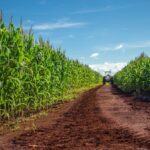Efficient harvesting is essential for maximizing yields, maintaining crop quality, and minimizing post-harvest losses. South African farmers can adopt several techniques to streamline their harvesting process. Here are some effective strategies to consider:
- Timing is Key: Harvest crops at the optimal stage of maturity to ensure peak flavor, nutritional content, and marketability. Use visual cues like color, size, and firmness to determine readiness.
- Use of Proper Tools: Equip yourself with appropriate harvesting tools such as sharp knives, shears, or harvest baskets. Ensure tools are clean and well-maintained to minimize damage to crops during harvesting.
- Preparation and Planning: Plan harvesting schedules based on weather forecasts and market demands. Organize equipment, containers, and transportation logistics in advance to streamline operations.
- Selective Harvesting: Practice selective harvesting by picking only ripe or mature fruits and vegetables. This approach reduces waste and allows younger produce to continue ripening for future harvests.
- Gentle Handling: Handle harvested crops with care to avoid bruising or damage. Use padded containers or bins and avoid dropping or stacking produce too high to maintain quality.
- Cooling and Shade: Immediately after harvest, cool crops rapidly to preserve freshness and extend shelf life. Store harvested produce in shaded areas or use cooling facilities to prevent wilting or spoilage.
- Post-Harvest Treatment: Implement post-harvest treatments such as washing, grading, and packing to prepare crops for market. Remove debris, sort by size and quality, and package according to market standards.
- Team Coordination: If harvesting involves a team, ensure clear communication and coordination among workers. Assign specific tasks and roles to optimize efficiency and minimize errors.
- Continuous Monitoring: Monitor harvested crops regularly for signs of spoilage or deterioration. Remove damaged or infected produce promptly to prevent spreading to healthy crops.
- Record Keeping: Maintain accurate records of harvest dates, quantities, and conditions. This information helps track productivity, identify trends, and improve future harvesting strategies.
Benefits of Efficient Harvesting
- Maximized Yield: Ensures all mature crops are harvested timely, optimizing yield potential.
- Improved Quality: Reduces damage and maintains crop quality, enhancing market value and consumer satisfaction.
- Reduced Losses: Minimizes post-harvest losses due to spoilage or mishandling, maximizing profitability.
By adopting these techniques, South African farmers can streamline their harvesting operations, improve crop quality, and increase overall farm productivity. Efficient harvesting not only benefits farmers economically but also contributes to sustainable agricultural practices and food security in the region.
Join 'Farmers Mag' WhatsApp Channel
Get the latest Farming news and tips delivered straight to your WhatsApp
CLICK HERE TO JOIN






